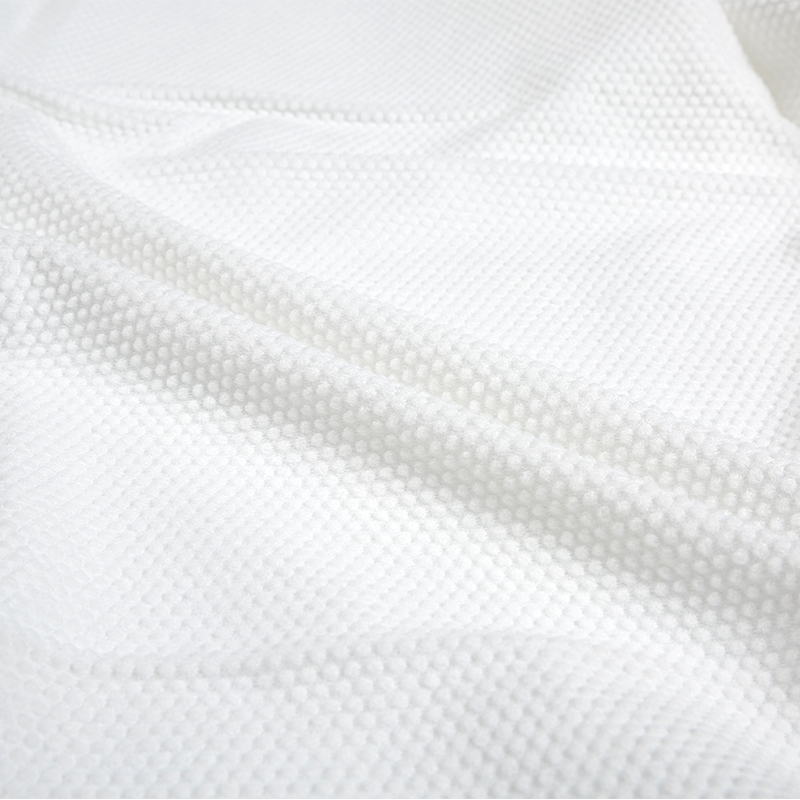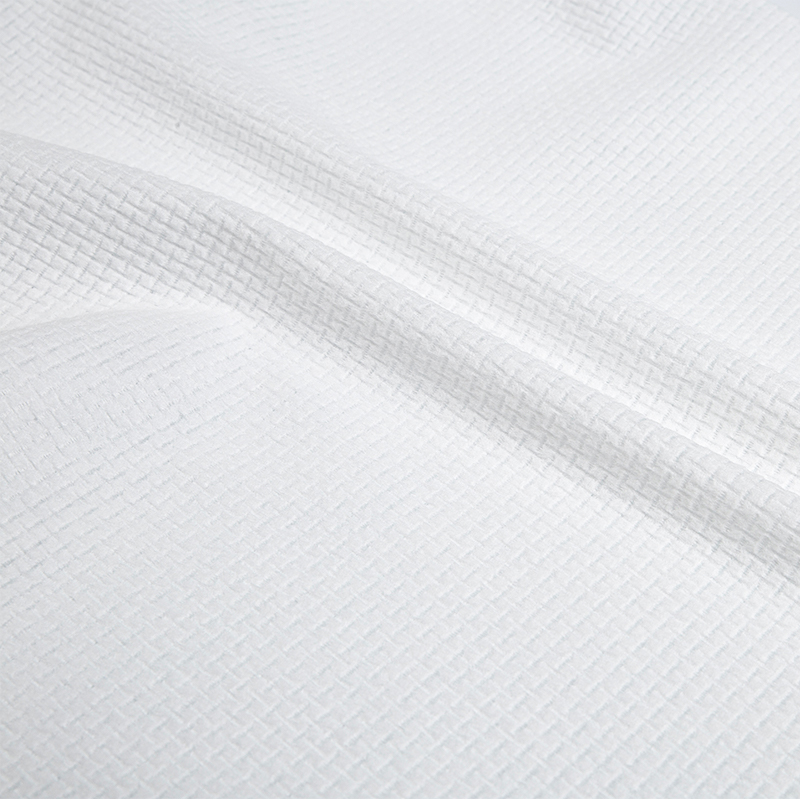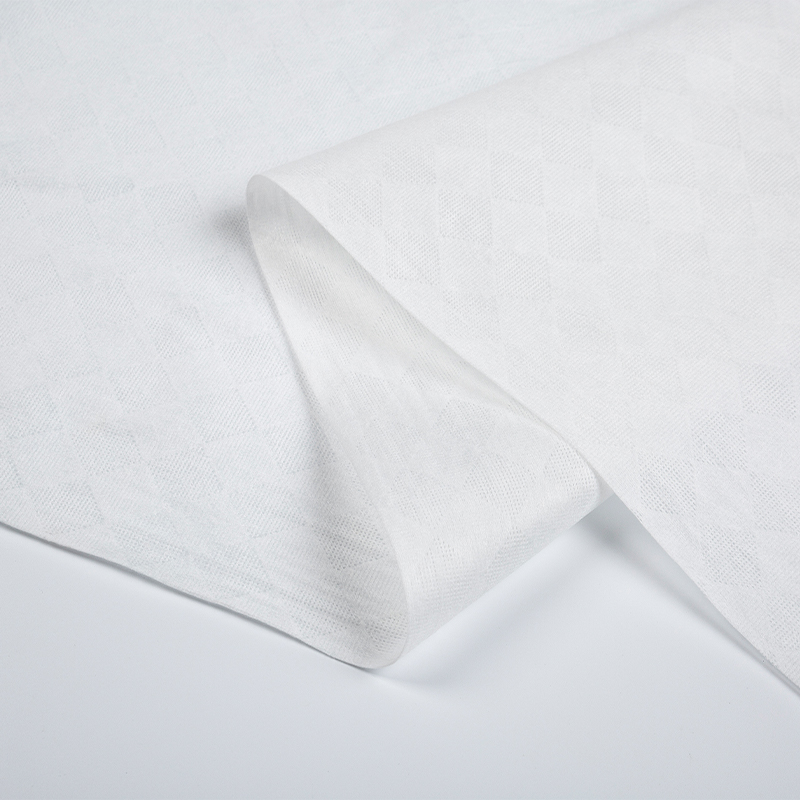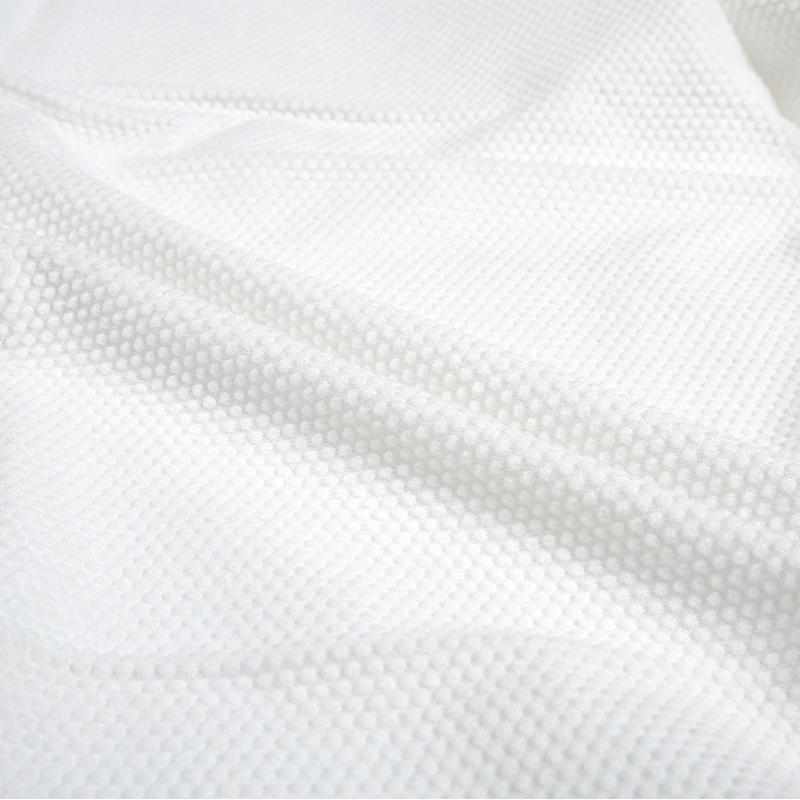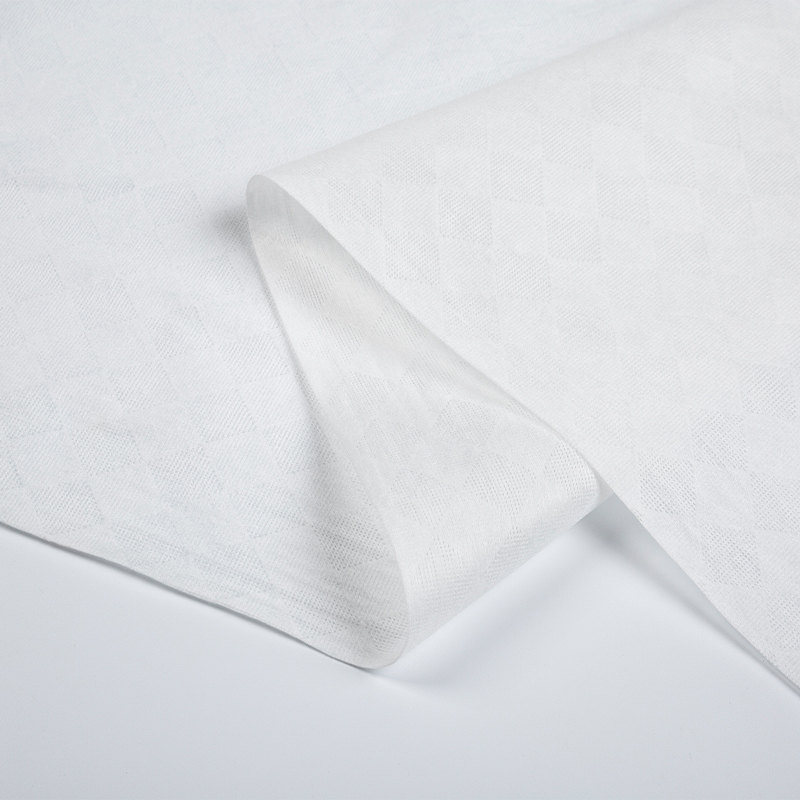Founded in 2022, Hangzhou Shunlong Nonwovens Technology Co., Ltd. is a professional China nonwoven fabric manufacturer and non-woven raw material factory
1. Technological breakthroughs to improve absorbency
Water absorption is the core performance of Spunlace Nonwoven Fabric in the fields of wet wipes, medical dressings, etc., which is mainly affected by materials and processes.
1. Optimization of fiber materials
Introduction of natural fibers: Adding more natural fibers (such as cotton and viscose fibers) to improve absorbency. These fibers are naturally hydrophilic and can quickly absorb and store water.
Superabsorbent fibers: Using functionalized fibers such as superabsorbent fibers (SAP) or modified fibers containing hygroscopic factors, nonwoven fabrics can quickly swell and absorb water many times their own weight after contact with liquid.
2. Surface modification technology
Plasma treatment: Plasma technology is used to generate more hydrophilic groups on the fiber surface to increase the water absorption rate and water absorption capacity.
Chemical coating technology: Coating hydrophilic coating materials such as hydroxyl compounds or polyethylene glycol (PEG) on the fiber surface can further enhance the absorbency and moisture retention of needle-punched nonwoven fabrics.
3. Fiber arrangement and pore optimization
Fiber mesh structure design: Optimize the fiber arrangement density and porosity by adjusting the intensity and angle of the jet water flow, thereby increasing the water absorption path.
Three-dimensional fiber network structure: The three-dimensional fiber network technology is used to form more water storage space between fibers and enhance water absorption capacity.
2. Technological breakthroughs to improve softness
Softness is an important indicator of whether Spunlace Nonwoven Fabric can be applied to high-end medical dressings and cosmetics industries. It is mainly affected by the fiber itself and the manufacturing process.
1. Ultrafine fiber application
Nanofiber technology: Introduce nanofibers to reduce the surface roughness of the fabric through its ultra-fine diameter, making the non-woven fabric softer to the touch.
Bi-component fiber: Bi-component fiber with a skin-core structure (such as PE/PP, PET/PA) is used. The thermal bonding of the low-melting-point skin fiber makes the fabric softer and delicate.
2. Improved spunlace process
Multi-layer spunlace process: Through layered spunlace, fibers of different materials are combined to increase softness. The outer layer uses soft fibers, and the inner layer retains strong fibers, so as to take into account both comfort and performance.
Low-pressure spunlace treatment: Add low-pressure water flow post-treatment on the basis of traditional high-pressure spunlace to further reduce the surface hardness of the fiber and improve the overall softness.
3. Improvement of post-finishing process
Softener coating: By applying softening additives (such as silicone oil, softening emulsion) to further improve the feel of needle-punched non-woven fabrics, it is more suitable for applications that directly contact the skin.
Mechanical softening treatment: Use softening finishing equipment (such as embossing or kneading machine) to perform secondary processing on the fabric to make the fiber arrangement more uniform and increase the soft touch of the fabric surface.
3. Technological breakthroughs to improve strength
The strength of Spunlace Nonwoven Fabric directly affects its service life and applicability in industry, medical and other high-demand fields.
1. Use of high-performance fibers
Introduction of reinforcing fibers: The use of high-strength fibers (such as polyester fibers, aramid fibers) blended with conventional fibers can greatly improve the tensile strength and tear resistance of needle-punched non-woven fabrics.
Carbon fiber or glass fiber: In some special application scenarios, a trace amount of carbon fiber or glass fiber is introduced to enhance the structural strength, which is suitable for high-load fields such as industrial filtration.
2. Spunlace process enhancement
High-pressure spunlace enhancement: Increase the pressure and nozzle density of the spunlace equipment to make the fibers more tightly bonded, thereby enhancing the mechanical strength of the fabric.
Multi-directional spunlace: Use spunlace technology that sprays from multiple angles to evenly enhance the multi-directional tensile properties of the fabric.
3. Fiber cross-linking technology
Chemical cross-linking treatment: Use cross-linking agents (such as polyvinyl alcohol, epoxy resin) to enhance the chemical bonding between fibers, thereby improving the overall strength of the fabric.
Hot-melt bonding technology: Use the low-melting point outer layer of the two-component fiber to hot-melt bond the fiber web to make the strength distribution more uniform, especially suitable for durable needle-punched non-woven fabrics.
4. Comprehensive technology improvement and intelligent production
1. Composite process innovation
Combining the needle-punching process with the spunbonding process to produce composite materials not only retains the softness and water absorption of the Spunlace Nonwoven Fabric, but also uses the spunbond layer to improve strength and durability.
Combining spunlace non-woven fabrics with hot-bonded non-woven fabrics to form composite materials is widely used in high-end medical products and industrial wipes.
2. Intelligent production control
Introducing a digital production control system, by precisely adjusting the spunlace pressure, nozzle arrangement and speed parameters, the fiber bonding effect is optimized in real time to maximize the performance of the fabric.
Using artificial intelligence to analyze the impact of different formulas on performance, accelerate product development and quality improvement.
Future Outlook
With the continued growth of market demand for high-performance nonwoven fabrics, the production technology of Spunlace Nonwoven Fabric will be further upgraded. Future development directions include:
More environmentally friendly raw material selection and production process.
Intelligent production full process monitoring and optimization.
Research and development of recyclable and degradable needle-punched nonwoven fabrics.
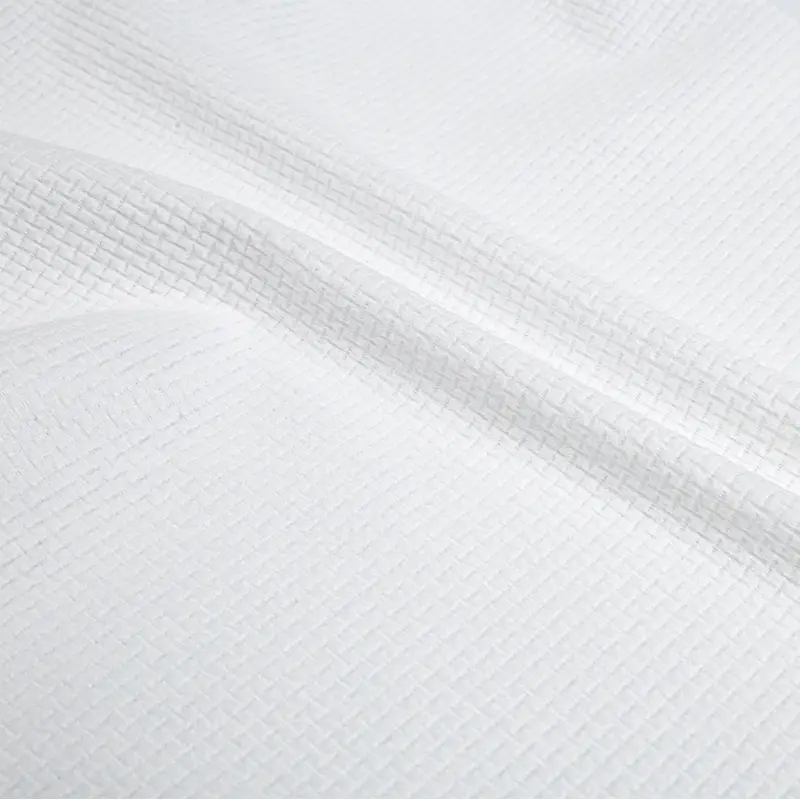

 English
English 日本語
日本語 русский
русский Español
Español